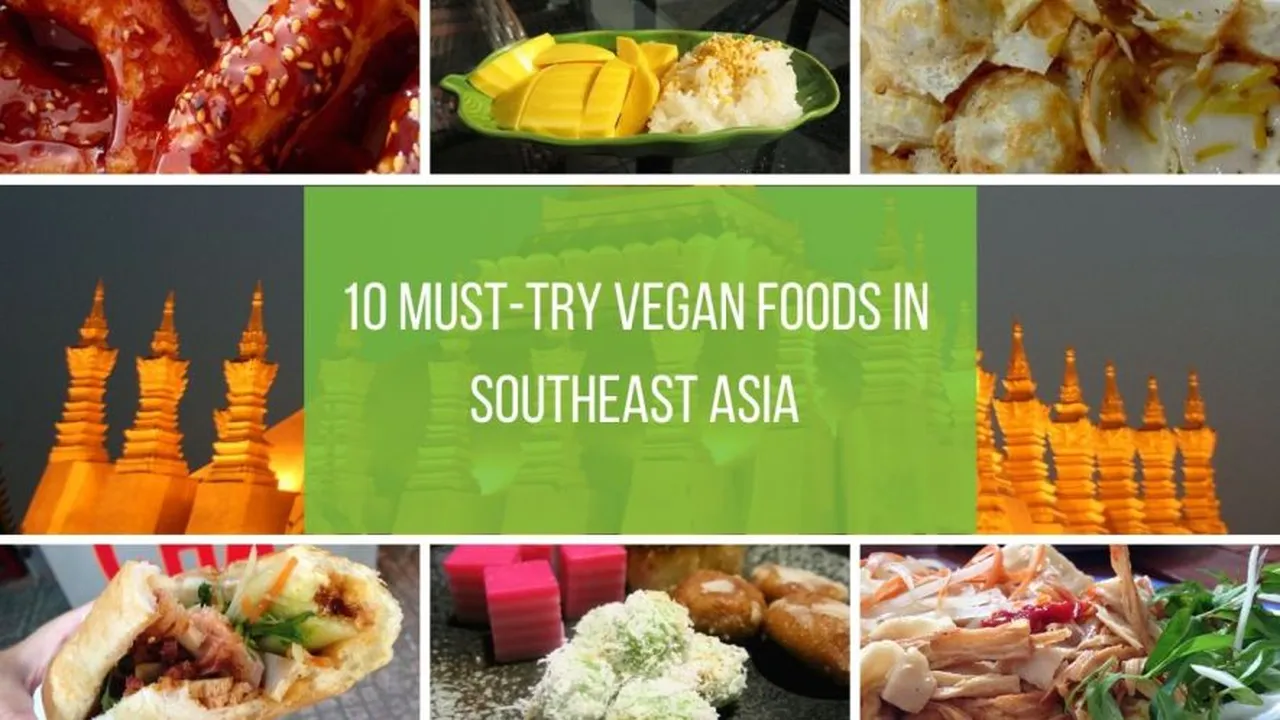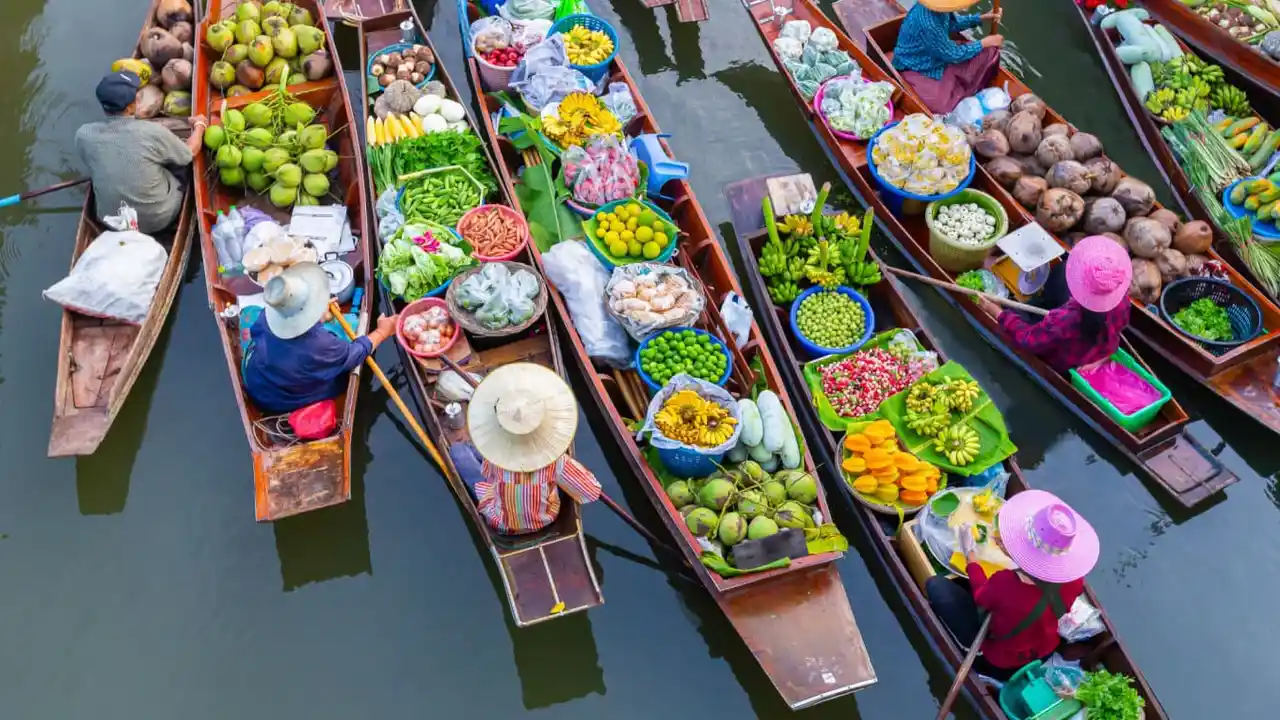Southeast Asia: Best Places to Find Spicy Food

Introduction to the Fiery Flavors of Southeast Asia Food and Drink
Alright, spice lovers, gather 'round! Southeast Asia is calling your name. If you're on the hunt for that tongue-tingling, sweat-inducing, utterly addictive heat, you've hit the jackpot. We're talking chili peppers galore, fragrant herbs that kick, and dishes so flavorful they'll blow your mind. Forget bland – this is where your taste buds go on an adventure.
Top Spicy Food Destinations in Southeast Asia: A Culinary Journey
So, where to start your spicy quest? Let's break down some of the hottest (literally!) destinations:
Thailand: Land of Smiles and Seriously Spicy Curries
Thailand is a classic for a reason. From bustling street food stalls to upscale restaurants, you'll find spice at every turn. Think creamy green curries packing a punch, fiery tom yum soup that clears your sinuses, and pad krapow (stir-fried holy basil) so good it hurts. Don't be afraid to ask for "pet pet" (very spicy) – if you dare!
Must-Try Thai Spicy Dishes:
- Tom Yum Goong (Spicy Shrimp Soup): A fragrant and sour soup with lemongrass, galangal, kaffir lime leaves, chili, and shrimp.
- Green Curry: Creamy coconut milk-based curry with green chilies, vegetables, and meat (usually chicken or beef).
- Pad Krapow Moo (Stir-Fried Holy Basil with Pork): Minced pork stir-fried with holy basil, chilies, garlic, and soy sauce, served over rice with a fried egg.
- Som Tum (Spicy Papaya Salad): A refreshing and fiery salad made with shredded green papaya, tomatoes, green beans, peanuts, dried shrimp, fish sauce, lime juice, and chilies.
Malaysia: A Melting Pot of Spicy Delights and Food Adventures
Malaysia's culinary scene is a vibrant mix of Malay, Chinese, and Indian influences, and that translates to some seriously delicious spicy food. From fiery curries to spicy noodle soups, there's something for every palate. Look out for dishes like nasi lemak (coconut rice with spicy sambal), laksa (spicy noodle soup), and rendang (slow-cooked meat in a spicy coconut milk sauce).
Must-Try Malaysian Spicy Dishes:
- Nasi Lemak: Coconut rice served with fried chicken, peanuts, anchovies, cucumber, and sambal (a spicy chili paste).
- Laksa: A spicy noodle soup with a coconut milk-based broth, noodles, shrimp, fish, and vegetables. There are many regional variations of laksa, each with its own unique flavor profile.
- Rendang: Slow-cooked meat (usually beef) in a rich and spicy coconut milk-based sauce.
- Char Kway Teow: Stir-fried noodles with shrimp, cockles, Chinese sausage, bean sprouts, and chili paste.
Indonesia: Spice Islands and Volcanic Flavors in Indonesian Food and Drink
Indonesia, the land of spices, is a true paradise for chili lovers. From fiery sambals to rich curries, Indonesian cuisine is packed with flavor and heat. Don't miss out on dishes like rendang (yes, it's also popular here!), gado-gado (vegetable salad with peanut sauce), and ayam penyet (smashed fried chicken with sambal).
Must-Try Indonesian Spicy Dishes:
- Rendang: (Again!) Indonesian rendang is often considered the "mother" of rendang, with a more complex and intense flavor than its Malaysian counterpart.
- Gado-Gado: A vegetable salad with peanut sauce, tofu, tempeh, and boiled eggs.
- Ayam Penyet: Smashed fried chicken served with sambal, tofu, tempeh, and vegetables.
- Sambal: A chili paste that is ubiquitous in Indonesian cuisine. There are countless variations of sambal, each with its own unique flavor and level of spiciness.
Vietnam: Subtle Heat and Fresh Herbs in Vietnamese Food and Drink
While not as overtly spicy as some of its neighbors, Vietnam still offers plenty of opportunities to spice things up. Fresh chili peppers are often served on the side, allowing you to customize the heat level of your dishes. Look out for dishes like bun bo Hue (spicy beef noodle soup), and banh mi (Vietnamese sandwich) with a spicy kick.
Must-Try Vietnamese Spicy Dishes:
- Bun Bo Hue: A spicy beef noodle soup with lemongrass, annatto seeds, and chili oil.
- Banh Mi: A Vietnamese sandwich with pate, cold cuts, pickled vegetables, cilantro, and chili peppers.
- Goi Cuon (Fresh Spring Rolls): While not inherently spicy, these fresh spring rolls are often served with a spicy peanut sauce or chili dipping sauce.
- Pho: While traditionally mild, you can always add chili sauce or fresh chili peppers to your pho for an extra kick.
Laos: Bold and Rustic Flavors in Lao Food and Drink
Laos is often overlooked, but its cuisine is a hidden gem for spice lovers. Lao food is characterized by its bold and rustic flavors, with a focus on fresh herbs and chili peppers. Try dishes like laap (minced meat salad), tam mak hoong (Lao papaya salad), and or lam (a thick vegetable stew).
Must-Try Lao Spicy Dishes:
- Laap: A minced meat salad with herbs, spices, and roasted rice powder.
- Tam Mak Hoong: Lao papaya salad, which is similar to Thai som tum but often spicier and more fermented.
- Or Lam: A thick vegetable stew with eggplant, beans, mushrooms, and meat (usually beef or chicken).
- Sai Oua (Lao Sausage): A flavorful sausage made with pork, herbs, and spices.
Essential Spicy Ingredients for Southeast Asian Cuisine and Food Preparation
Want to recreate those fiery flavors at home? Here are some essential ingredients to keep in your pantry:
- Chili Peppers: From bird's eye chilies to Thai chilies to dried chilies, the options are endless. Experiment to find your favorite level of heat.
- Chili Paste/Sambal: A versatile condiment that can be used to add spice to almost any dish.
- Ginger & Galangal: These rhizomes add a warm and aromatic spice to many Southeast Asian dishes.
- Lemongrass: A fragrant herb that adds a citrusy and slightly spicy flavor.
- Kaffir Lime Leaves: These leaves add a unique citrusy aroma and flavor.
- Fish Sauce: A salty and umami-rich sauce that is a staple in Southeast Asian cuisine.
- Shrimp Paste (Belacan/Terasi): A fermented shrimp paste that adds a pungent and savory flavor.
Spice Level Guide: Navigating the Heat Scale in Southeast Asia Food and Drink
Not all spice is created equal! Here's a rough guide to help you navigate the heat levels:
- Mild: A gentle warmth that doesn't overpower the other flavors.
- Medium: A noticeable heat that lingers on the tongue.
- Spicy: A burning sensation that makes you sweat.
- Very Spicy: Intense heat that can be painful for some.
- "Pet Pet" (Thai): Bring on the fire! This is for the true chili heads.
Product Recommendations: Spice Up Your Life with These Southeast Asian Delights
Okay, let's talk specific products to get you started on your spicy Southeast Asian adventure. I'm focusing on readily available items you can find online or in well-stocked Asian supermarkets. Prices are approximate and can vary.
Sambal Oelek: The All-Purpose Chili Paste
What it is: A versatile Indonesian chili paste made with ground chili peppers, vinegar, and salt. It's got a good kick and a slightly tangy flavor.
Usage Scenarios:
- Stir-fry: Add a spoonful to your stir-fries for an instant burst of heat.
- Soups: Mix it into soups and stews for a fiery flavor.
- Dipping sauce: Combine it with soy sauce, lime juice, and sugar for a simple dipping sauce.
- Marinade: Use it as a marinade for meats and vegetables.
Product Comparison:
- Huy Fong Sambal Oelek: Widely available, consistent quality, slightly vinegary. (Price: ~$5 for 8 oz)
- Lee Kum Kee Chili Bean Sauce (Toban Djan): A bit thicker and richer than Sambal Oelek, with fermented soybeans for extra umami. (Price: ~$6 for 8 oz)
- Homemade Sambal Oelek: You can find recipes online! This lets you control the ingredients and spice level.
Sriracha: The Rooster Sauce That Conquered the World
What it is: A fermented chili sauce made with chili peppers, garlic, vinegar, sugar, and salt. It's got a sweet, tangy, and garlicky flavor with a moderate heat.
Usage Scenarios:
- Eggs: Drizzle it over scrambled eggs, omelets, or fried eggs.
- Pizza: Add a few drops to your pizza for a spicy kick.
- Noodles: Mix it into noodles for a quick and easy meal.
- Sandwiches: Spread it on sandwiches for a flavorful condiment.
Product Comparison:
- Huy Fong Sriracha: The classic! Consistent flavor and widely available. (Price: ~$4 for 17 oz)
- Flying Goose Sriracha: A bit sweeter and less spicy than Huy Fong. (Price: ~$5 for 17 oz)
- Trader Joe's Sriracha: A budget-friendly option with a decent flavor. (Price: ~$3 for 10 oz)
Thai Red Curry Paste: The Foundation for Delicious Curries
What it is: A paste made with red chilies, lemongrass, galangal, kaffir lime leaves, coriander, cumin, and other spices. It's the key ingredient for making authentic Thai red curry.
Usage Scenarios:
- Red Curry: Use it as the base for your Thai red curry.
- Marinade: Marinate chicken, beef, or tofu with the paste before grilling or stir-frying.
- Soup: Add a spoonful to soups and stews for a Thai-inspired flavor.
Product Comparison:
- Maesri Thai Red Curry Paste: A popular and authentic brand. (Price: ~$3 for 4 oz)
- Aroy-D Thai Red Curry Paste: Another good option with a similar flavor profile. (Price: ~$4 for 4 oz)
- Homemade Red Curry Paste: If you're feeling ambitious, you can make your own!
Dried Chili Flakes: For Adding a Quick Burst of Heat
What it is: Crushed dried chili peppers, typically made from red chili peppers. A simple and versatile way to add heat to any dish.
Usage Scenarios:
- Pizza: Sprinkle them over pizza for a spicy kick.
- Pasta: Add them to pasta sauces for a fiery flavor.
- Stir-fries: Toss them into stir-fries for an extra layer of heat.
- Soups: Sprinkle them on top of soups for a quick burst of spice.
Product Comparison:
- Generic Chili Flakes: Widely available and affordable. (Price: ~$2 for a small jar)
- Korean Chili Flakes (Gochugaru): A bit milder and fruitier than regular chili flakes. (Price: ~$8 for 8 oz)
- Aleppo Pepper Flakes: A Middle Eastern chili flake with a mild heat and a slightly sweet flavor. (Price: ~$10 for 4 oz)
Adapting Spicy Food to Your Tolerance: A Heat Management Guide
Not everyone can handle the same level of spice. Here's how to adjust the heat to your liking:
- Start Small: Add a small amount of chili peppers or chili paste to your dishes and taste as you go.
- Remove Seeds: Removing the seeds from chili peppers will reduce their heat.
- Use Dairy: Dairy products like milk, yogurt, and cheese can help to neutralize the heat of chili peppers.
- Eat Rice or Bread: Starchy foods can help to absorb some of the chili oil.
- Avoid Water: Water can actually spread the chili oil around your mouth, making the burning sensation worse.
- Have Something Sweet: A small amount of sugar or honey can help to counteract the heat.
Beyond the Burn: Exploring the Health Benefits of Spicy Food
Believe it or not, spicy food isn't just about the pain! It can also offer some health benefits:
- Pain Relief: Capsaicin, the active compound in chili peppers, can act as a natural pain reliever.
- Improved Metabolism: Spicy food can help to boost your metabolism and burn calories.
- Heart Health: Some studies suggest that spicy food can help to lower cholesterol and blood pressure.
- Antioxidant Properties: Chili peppers are rich in antioxidants, which can help to protect your cells from damage.
:max_bytes(150000):strip_icc()/277019-baked-pork-chops-with-cream-of-mushroom-soup-DDMFS-beauty-4x3-BG-7505-5762b731cf30447d9cbbbbbf387beafa.jpg)






